Enhance Your Aquarium with the Captivating 6 X Penguin Tetra: A Graceful and Striking Addition to Your South American Tetra Fish Collection, Easy Care Tropical Fish for Beginners, Perfect Community Friends
£10.49 Original price was: £10.49.£8.71Current price is: £8.71.
Welcome these beautiful creatures into your aquarium! This listing includes 6 individual Penguin Tetras, known for their vibrant colors and graceful movements. Ideal for community tanks, these peaceful companions thrive in well-planted environments, enhancing your aquatic display.
996 in stock
Species Introduction
The Penguin Tetra (scientific name: Paracheirodon innesi) is a delightful member of the Characidae family, originating from the freshwater rivers and streams of South America. This small schooling fish typically reaches a maximum length of 4 cm, making it an excellent choice for community tanks and aquariums of various sizes. The Penguin Tetra is known for its distinctive black and white coloration, reminiscent of a tuxedo, which adds a striking visual element to any aquatic environment. These graceful swimmers thrive in well-planted tanks that mimic their natural habitat, characterized by slow-moving waters with plenty of hiding spots and soft, diffused lighting. Their peaceful temperament and sociable nature make them ideal companions for a variety of other fish species, particularly in community settings.
Care Requirements Dashboard
Essential Care Guide
| Optimal Living Conditions | |
|---|---|
| Water Temperature | 24-27°C (75-81°F) |
| pH Level | 6.5-7.5 |
| Water Hardness | 4-12 dKH |
| Minimum Tank Size | 80L (20 gal) |
| Salinity | Freshwater |
| Care Level | Beginner Friendly |
✓ Care Level: Easy
| Parameter | Ideal Range |
|---|---|
| Tank Size | Minimum 20 gallons |
| pH Level | 6.0 – 7.5 |
| Temperature | 22 – 28°C (72 – 82°F) |
| Hardness | 2 – 15 dGH |
Natural Behavior & Temperament
The Penguin Tetra is a small, peaceful fish that exhibits fascinating social behaviors. In the wild, they are known to form large schools, which not only provides safety in numbers from predators but also enhances their natural beauty when swimming together. Observing a school of Penguin Tetras in a well-planted aquarium is a mesmerizing sight, as they dart and weave through the aquatic plants, showcasing their vibrant colors. These fish are generally non-aggressive and can coexist harmoniously with other community fish, making them an excellent choice for beginners looking to create a lively and colorful aquarium. Their playful nature and tendency to explore their surroundings make them engaging companions, and they thrive in environments where they can interact with both their tank mates and the aquascape.
Tank Setup Guide
Creating an ideal environment for your Penguin Tetras involves replicating their natural habitat as closely as possible. Start with a minimum tank size of 20 gallons to accommodate a small school of these fish, as they feel more secure when surrounded by their own kind. Use a soft substrate, such as fine gravel or sand, to mimic the riverbeds they inhabit in the wild. Incorporate plenty of live plants, such as Java Fern, Anubias, and Amazon Sword, to provide hiding spots and create a lush environment. Floating plants can also help diffuse light, creating a more natural ambiance. Additionally, include driftwood and rocks to provide shelter and break up the line of sight, which can reduce stress among the fish. Ensure that the tank is well-cycled before introducing your Penguin Tetras, as stable water conditions are crucial for their health and well-being.
Water Quality Management
Maintaining optimal water quality is essential for the health of your Penguin Tetras. Regularly monitor the pH levels, keeping them within the range of 6.0 to 7.5, as this mimics their natural habitat. The temperature should be maintained between 22 to 28°C (72 to 82°F), with slight fluctuations being acceptable as long as they remain within this range. Testing for water hardness is also important, aiming for 2 to 15 dGH. Regular water changes, approximately 25% weekly, will help keep nitrate levels low and remove any accumulated toxins. Use a quality water conditioner to eliminate chlorine and chloramines from tap water before adding it to the tank. Additionally, consider using a high-quality filtration system to ensure proper water circulation and oxygenation, which are vital for the overall health of your aquatic companions.
Feeding & Nutrition
Providing a balanced diet for your Penguin Tetras is crucial for their growth and vitality. In their natural habitat, they primarily feed on small insects, crustaceans, and plant matter. In captivity, a high-quality flake food formulated for tropical fish will suffice as a staple diet. Supplement their diet with occasional offerings of frozen or live foods, such as brine shrimp, daphnia, or bloodworms, to enhance their nutritional intake and stimulate natural foraging behaviors. Feed your fish small amounts 2-3 times a day, ensuring they consume everything within a few minutes to prevent overfeeding and maintain water quality. It’s important to observe their feeding habits and adjust portion sizes accordingly to ensure they remain healthy and active. Remember to vary their diet to prevent boredom and promote overall well-being.
Compatibility Guide
Penguin Tetras are known for their peaceful nature, making them excellent additions to community tanks. They thrive in groups, so it is recommended to keep at least six individuals together to ensure they feel secure and display their natural behaviors. Ideal tank mates include other small, non-aggressive fish such as Neon Tetras, Corydoras Catfish, and Guppies. Avoid keeping them with larger or more aggressive species that may intimidate or harm them. Additionally, be cautious with fin-nipping species like certain barbs, as they may see the long fins of the Penguin Tetra as an invitation to nip. Always research potential tank mates to ensure compatibility and create a harmonious aquatic environment.
Tank Mate Compatibility Guide
Great Tank Mates
- Other peaceful community fish
- Corydoras catfish
- Small tetras
- Peaceful dwarf shrimp
Avoid These Tank Mates
- Aggressive cichlids
- Large predatory fish
- Fin nippers
Compatibility Note: Always research specific species requirements and observe fish behavior when introducing new tank mates. Individual fish personalities can vary!
Health & Wellness
Maintaining the health of your Penguin Tetras involves regular observation and proactive care. Common health issues include fin rot, ich, and other parasitic infections, often resulting from poor water quality or stress. Signs of distress may include faded colors, erratic swimming, or isolation from the school. To prevent these issues, ensure stable water parameters and a well-maintained tank environment. Quarantine new arrivals for at least two weeks before introducing them to the main tank to prevent the spread of diseases. If health issues arise, consult with an aquatic veterinarian or a knowledgeable aquarist for appropriate treatment options. Regularly checking for signs of stress or illness will help you address potential problems before they escalate.
Breeding Information
Breeding Penguin Tetras can be a rewarding experience for aquarists. To encourage spawning, set up a separate breeding tank with soft, acidic water and fine-leaved plants or spawning mops where the fish can lay their eggs. Condition the breeding pair with high-quality foods to promote reproductive readiness. Once the female is ready, she will scatter her eggs among the plants, and the male will fertilize them. After spawning, it’s crucial to remove the parents from the breeding tank, as they may consume the eggs. The eggs typically hatch within 24-36 hours, and the fry will become free-swimming after about 5-7 days. Feed the fry with infusoria or finely crushed flake food until they are large enough to consume standard fish food. Providing a stable environment and proper nutrition during this critical growth phase is essential for their survival.
Acclimation Process
Acclimating your new Penguin Tetras to their tank is a crucial step to ensure their health and reduce stress. Begin by floating the sealed bag containing the fish in the aquarium for about 15-20 minutes to equalize the temperature. After this, gradually introduce small amounts of tank water into the bag every 5-10 minutes, allowing the fish to adjust to the water parameters. This process should take about an hour. Once acclimated, gently release the Tetras into the tank using a net to avoid adding any of the store water. It’s important to avoid sudden changes in water conditions, as this can lead to shock and health issues. Monitor the fish closely after introduction to ensure they adapt well to their new environment.
Long-term Care
Penguin Tetras have a lifespan of approximately 3-5 years, provided they are given proper care and a suitable environment. As they grow, it’s essential to continue monitoring water quality and making adjustments as needed. Regular maintenance, including water changes and substrate cleaning, will help maintain a healthy ecosystem for your fish friends. Keep an eye on their behavior and physical condition, as any changes may indicate underlying health issues. Providing a varied diet, maintaining stable water parameters, and ensuring a stress-free environment are key components of long-term care. By committing to their well-being, you can enjoy the beauty and charm of these graceful swimmers for many years.
Natural Habitat Recreation
To recreate the natural habitat of Penguin Tetras, focus on incorporating elements that mimic their native environment. In the wild, they inhabit slow-moving waters with plenty of vegetation, so a well-planted tank is essential. Use a variety of live plants to create hiding spots and open swimming areas. Incorporate driftwood and rocks to simulate the structure found in their natural rivers. Aim for a dimly lit environment by using floating plants or a gentle light source, as this will help reduce stress and promote natural behaviors. Additionally, consider adding leaf litter or Indian almond leaves to the substrate, which can provide both shelter and natural food sources for the fish. Creating a biotope that reflects their natural surroundings will not only enhance their well-being but also provide an aesthetically pleasing display in your aquarium.
Seasonal Care Adjustments
As seasons change, it’s important to adjust the care routine for your Penguin Tetras to accommodate varying environmental conditions. During warmer months, ensure that the water temperature does not exceed 28°C (82°F), as higher temperatures can stress the fish and reduce oxygen levels. Use fans or chillers if necessary to maintain optimal conditions. In colder months, monitor the water temperature closely, ensuring it remains within the ideal range. Additionally, adjust the lighting duration to mimic natural daylight cycles, which can influence breeding behaviors and overall health. Regularly check for any signs of stress or illness during seasonal transitions, as changes in temperature and lighting can impact fish health. By being proactive in your care routine, you can ensure a stable environment for your aquatic companions year-round.
Expert Tips
For those looking to enhance their experience with Penguin Tetras, consider implementing some expert tips to ensure their happiness and health. First, always keep them in groups of at least six to promote natural schooling behavior and reduce stress. Second, provide a varied diet that includes high-quality flakes, frozen foods, and occasional live feeds to keep them active and healthy. Third, regularly check water parameters and perform routine maintenance to prevent any fluctuations that could harm your fish. Lastly, create a visually appealing aquascape that not only provides hiding spots but also allows for open swimming spaces. This will encourage natural behaviors and make your aquarium a vibrant and dynamic environment. By following these tips, you can create a thriving habitat for your Penguin Tetras that showcases their beauty and charm.
Troubleshooting
If you encounter issues with your Penguin Tetras, it’s essential to identify and address them promptly. Common problems include stress from poor water quality, aggression from tank mates, or inadequate hiding spots. If you notice signs of stress, such as hiding or erratic swimming, test the water parameters immediately to ensure they are within the ideal range. If aggression is a concern, consider rearranging the tank layout to break up territories or adding more hiding spots to reduce confrontations. Additionally, if your fish appear lethargic or show signs of disease, isolate any affected individuals and consult with an aquatic veterinarian for appropriate treatment options. Keeping a close eye on your fish and being proactive in addressing any issues will help maintain a healthy and thriving aquarium.
Scientific Background
The scientific classification of the Penguin Tetra places it within the family Characidae, which is known for its diverse range of freshwater fish species. As a member of the genus Paracheirodon, the Penguin Tetra shares genetic ties with other popular aquarium species, such as the Neon Tetra. This genetic diversity contributes to their adaptability and resilience in various aquatic environments. Research into the conservation status of these fish highlights the importance of sustainable practices in the aquarium trade, as over-collection and habitat destruction can threaten their populations in the wild. By supporting responsible aquaculture and maintaining healthy aquarium practices, hobbyists can contribute to the preservation of these beautiful species and their natural habitats.
Advanced Care Techniques
For experienced aquarists looking to take their care of Penguin Tetras to the next level, consider implementing advanced techniques to enhance their environment and well-being. One effective method is to establish a natural filtration system using live plants, which can help maintain water quality while providing additional oxygenation. Additionally, consider using a CO2 injection system to promote plant growth, which can create a more balanced ecosystem. Regularly rotate and rearrange the aquascape to stimulate the fish’s curiosity and encourage exploration. Furthermore, engage in selective breeding to enhance desirable traits, such as coloration or size, while ensuring the health of the breeding stock. By applying these advanced care techniques, you can create a dynamic and thriving environment that showcases the beauty and grace of your Penguin Tetras.
Water Quality Parameters
Optimal Range
24-27°C
6.5-7.5
0 ppm
Caution Zone
22-24°C or 27-29°C
6.0-6.5 or 7.5-8.0
0.25-0.5 ppm
Danger Zone
<22°C or >29°C
<6.0 or >8.0
>0.5 ppm
Monitoring Tip: Test water parameters weekly and perform regular water changes to maintain optimal conditions for your aquatic friends!
Frequently Asked Questions
Q: What tank size is required for the Penguin Tetra?
The Penguin Tetra, being a small and active species, thrives best in a tank of at least 60 litres. This size allows them ample swimming space and provides a stable environment for water parameters. A larger tank is recommended if you plan to keep a school of them, as they are social fish that prefer to be in groups of six or more. It is essential to ensure that the tank is well-filtered and provides hiding spots, as this will help reduce stress and promote natural behaviours.
✓ Expert Tip
Consider adding live plants and driftwood to create a more natural habitat that mimics their native South American waters.
Q: What water parameters do Penguin Tetras require?
Penguin Tetras prefer soft, slightly acidic water with a pH range of 6.0 to 7.5. The water hardness should be between 2 to 10 dGH, and the temperature should be maintained between 22°C and 28°C. Regular testing of these parameters is crucial, as fluctuations can lead to stress and health issues. Using a quality water conditioner and performing regular water changes will help maintain optimal conditions for these lovely fish.
✓ Expert Tip
Invest in a reliable water testing kit to monitor your tank’s conditions regularly.
Q: How often should I feed Penguin Tetras?
Penguin Tetras should be fed small amounts two to three times a day. It is important to provide a varied diet that includes high-quality flake food, micro-pellets, and occasional live or frozen foods such as brine shrimp or daphnia. Overfeeding can lead to poor water quality, so only feed what they can consume within a few minutes. Regular feeding will promote their vibrant colours and overall health.
✓ Expert Tip
Consider using a feeding ring to prevent food from spreading too widely and ensure all fish get their share.
Q: What are the best tank mates for Penguin Tetras?
Penguin Tetras are peaceful fish that do well in community tanks. Ideal tank mates include other small tetras, rasboras, and peaceful bottom dwellers like Corydoras. Avoid aggressive species, as they may stress the tetras or compete for food. It is also wise to ensure that all fish are of similar size to prevent any potential predation. The diversity in your aquarium will create a vibrant ecosystem while keeping your Penguin Tetras happy.
✓ Expert Tip
Introduce new fish gradually to avoid overwhelming your existing aquatic companions.
Q: How do I properly acclimatise Penguin Tetras to my aquarium?
To acclimatise Penguin Tetras, float the sealed bag in your aquarium for about 15-20 minutes to equalise the temperature. After this, gradually introduce small amounts of aquarium water into the bag every 5-10 minutes for about an hour. This process helps the fish adjust to the water parameters of their new environment. After acclimatisation, gently release the tetras into the tank using a net to avoid adding any transport water, which may contain harmful substances.
✓ Expert Tip
Always avoid sudden changes in water temperature as this can lead to shock and stress.
Q: What are the signs of healthy Penguin Tetras?
Healthy Penguin Tetras are active swimmers, displaying vibrant colours and clear eyes. They should exhibit normal feeding behaviours and swim in a shoal rather than isolating themselves. Look for any signs of distress such as rapid gill movement, clamped fins, or unusual swimming patterns, which may indicate stress or illness. Regular observation is key to ensuring your fish friends remain in optimal health.
✓ Expert Tip
Maintain good water quality and a stable environment to promote the overall well-being of your tetras.
Q: How do I successfully breed Penguin Tetras?
Breeding Penguin Tetras can be quite rewarding. Set up a separate breeding tank with soft, slightly acidic water and plenty of fine-leaved plants for spawning. Introduce a male and female, ensuring they are well-fed to encourage spawning. After spawning, remove the adults to prevent them from eating the eggs. The eggs will hatch in approximately 24-36 hours, and the fry will require infusoria or powdered fry food until they are large enough for small flakes. Regular water changes will help maintain a healthy environment for the fry.
✓ Expert Tip
Monitor water conditions closely during the breeding process to ensure the best outcomes for your fry.
Q: What temperature should I maintain for my Penguin Tetras?
The ideal temperature for Penguin Tetras ranges from 22°C to 28°C. Maintaining this temperature range is crucial, as fluctuations can stress the fish and compromise their immune systems. A reliable aquarium heater, paired with a thermometer, will help you keep the water at a stable temperature. It is advisable to avoid placing the tank in direct sunlight or near heating vents to prevent temperature spikes.
✓ Expert Tip
Use a heater with a thermostat for precise temperature control.
Q: How long do Penguin Tetras typically live in captivity?
In captivity, Penguin Tetras can live up to 5-7 years when provided with proper care and a suitable environment. Factors such as water quality, diet, and tank mates play a significant role in their longevity. Regular maintenance, including water changes and monitoring for diseases, will contribute to a healthier life for your tetras. By ensuring optimal conditions, you can enjoy the company of these beautiful creatures for years to come.
✓ Expert Tip
Keep a log of your tank parameters and fish health to identify any changes over time.
Q: What type of substrate is most suitable for Penguin Tetras?
For Penguin Tetras, a soft substrate is recommended, such as fine gravel or sand. This type of substrate mimics their natural habitat and is gentle on their delicate bodies. Additionally, it allows for easy planting of live plants, which provide hiding spots and improve water quality. Avoid sharp substrates that could injure the fish. Regular cleaning of the substrate is essential to prevent waste accumulation, which can lead to poor water quality.
✓ Expert Tip
Incorporate a vacuum to clean the substrate during water changes.
Q: What behavioural patterns should I expect from Penguin Tetras?
Penguin Tetras are known for their lively and social behaviour. They enjoy swimming in schools, often displaying a playful nature. You will observe them darting around the tank, exploring their environment and interacting with one another. They are generally peaceful but may exhibit shyness when introduced to new surroundings or tank mates. Providing plenty of hiding spots and plants will encourage their natural behaviour and reduce stress levels.
✓ Expert Tip
Regularly observe your fish to understand their behaviour patterns and identify any signs of stress.
Q: How can I prevent common diseases in Penguin Tetras?
Preventing diseases in Penguin Tetras largely depends on maintaining good water quality and a stress-free environment. Regular water changes, a balanced diet, and monitoring for signs of illness are essential. Quarantine new fish before introducing them to your established tank to avoid introducing pathogens. Additionally, ensure proper filtration and avoid overstocking your aquarium, as overcrowding can lead to stress and increase disease risk.
✓ Expert Tip
Regularly inspect your fish for any unusual behaviour or physical signs of illness.
Q: What lighting conditions do Penguin Tetras prefer?
Penguin Tetras thrive in moderate lighting conditions that mimic their natural habitat. A combination of ambient and tank lighting works well, but avoid direct sunlight as it can increase algae growth and stress the fish. Using a timer to provide a consistent light cycle of around 10-12 hours a day helps maintain a stable environment. Additionally, incorporating live plants can enhance the aesthetics of the aquarium while providing shaded areas for the tetras.
✓ Expert Tip
Adjust lighting based on the presence of live plants to ensure they receive adequate light for growth.
Q: How do I recognise stress in Penguin Tetras?
Signs of stress in Penguin Tetras can include hiding excessively, erratic swimming patterns, clamped fins, or changes in colour. If you notice your fish are not school swimming or are staying at the surface or bottom of the tank, this may indicate stress. It is crucial to assess the water quality and environmental conditions to identify potential stressors. Addressing the root cause of stress promptly will help maintain the health and well-being of your tetras.
✓ Expert Tip
Regularly monitor your aquarium environment to prevent stress-related issues.
Q: What natural habitat conditions should I replicate for Penguin Tetras?
To replicate the natural habitat of Penguin Tetras, aim for a well-planted aquarium with soft, slightly acidic water. They thrive in environments with plenty of hiding spots, such as driftwood and plants, which mimic their native streams and rivers in South America. Additionally, incorporating leaf litter can provide both shelter and a natural food source. Maintaining stable water conditions and providing a varied diet will ensure your tetras feel at home in your aquarium.
✓ Expert Tip
Research the specific plants and decorations that are native to their natural habitat for an authentic setup.

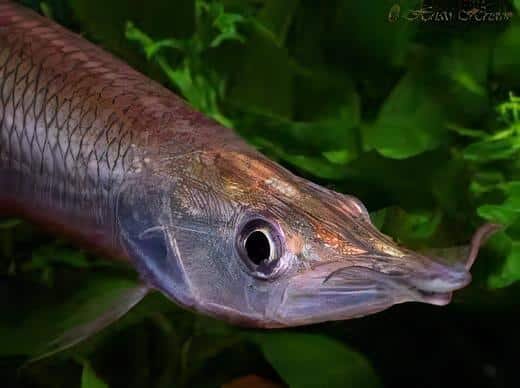
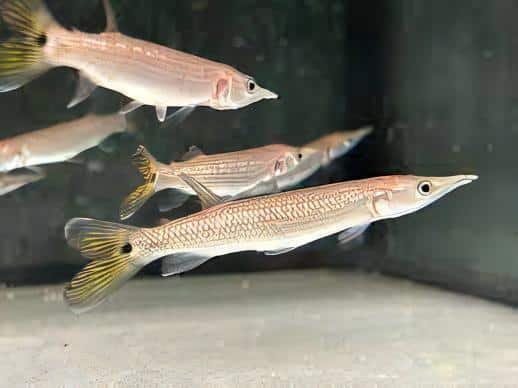
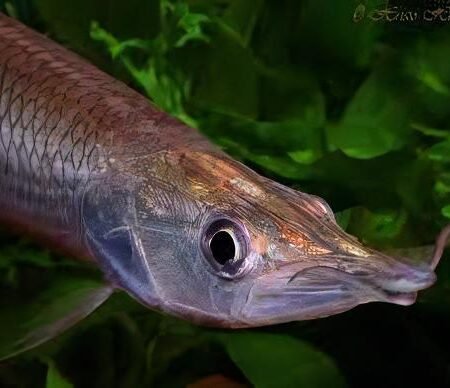
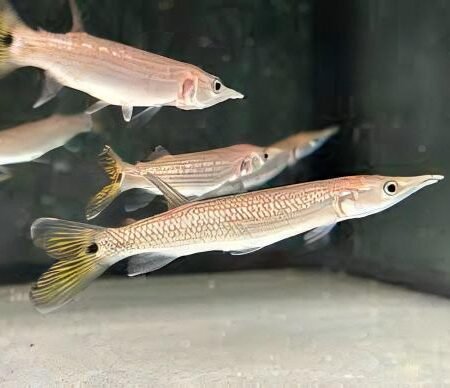
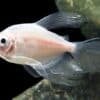
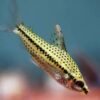










Emily Carter (verified owner) –
I recently added the 6 Penguin Tetras to my 40-gallon freshwater tank, and I couldn’t be happier! These little guys have been swimming gracefully for about two months now, and their striking colors truly enhance the overall aesthetic of my aquarium. Compared to other fish I’ve kept, the Penguin Tetras are incredibly social and seem to thrive in a community setting. I’ve noticed their vibrant hues become even more pronounced under good lighting, adding a beautiful visual contrast alongside my neon tetras.
While I initially worried about compatibility, they’ve integrated seamlessly with my other fish, showing no signs of aggression. They spend their days darting around and exploring every nook of the tank, which brings me so much joy. It’s heartwarming to see them so happy and healthy!
The only minor concern was their initial shyness; it took about a week for them to come out of their shells, but now they are the stars of the show! I highly recommend these tetras to anyone looking to add a lively and beautiful freshwater fish. They’d be perfect for both beginners and seasoned hobbyists who want to enhance their South American fish collection.
Jessica Harper (verified owner) –
I’ve been an aquarium hobbyist for over five years, and I can honestly say that adding the 6 Penguin Tetra to my setup has been one of my best decisions! These stunning freshwater fish are not only easy to care for but also incredibly vibrant, adding a beautiful splash of color to my tank. After about a month of observation, I noticed how their social behavior brings life to my aquarium; they swim gracefully together, creating a mesmerizing display that captivates everyone who visits.
I previously kept other tetra fish, but the Penguin Tetra truly stands out due to its unique markings and delightful temperament. They are peaceful and interact well with my other fish, which is always a plus in community tanks. One minor concern is their preference for slightly cooler water, but once I adjusted my tank temperature, they thrived beautifully.
If you’re a beginner or just looking to enhance your South American tetra collection, I highly recommend these charming little fish. They arrived promptly, healthy and lively, and I can’t wait to see how they grow. They’re perfect for anyone wanting to add a dynamic element to their aquarium while ensuring fish welfare is prioritized. You won’t regret making them part of your aquatic family!